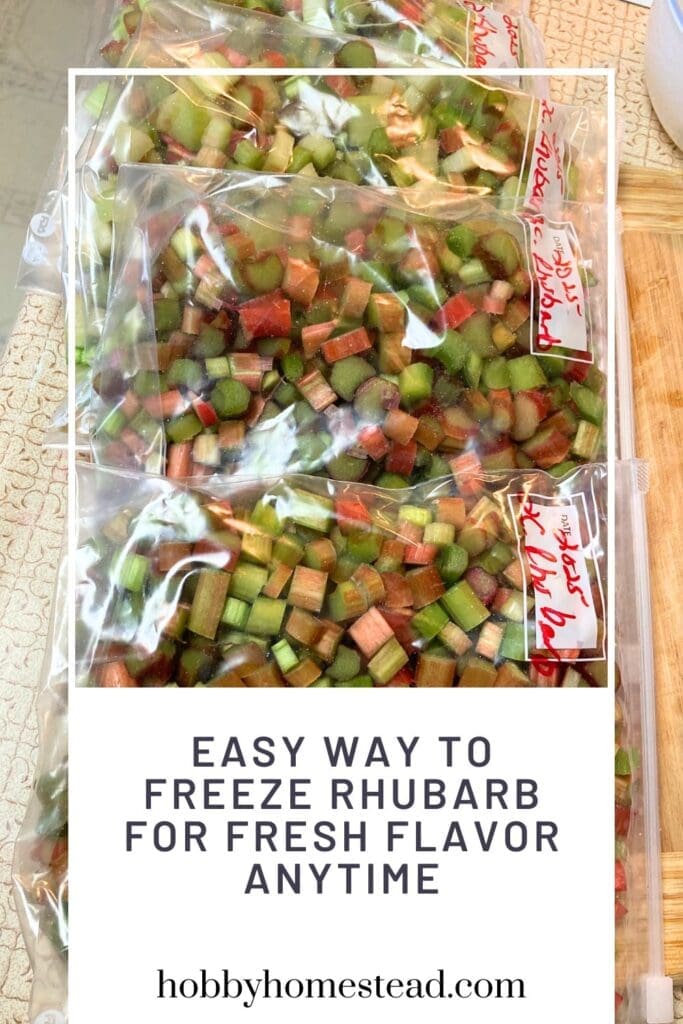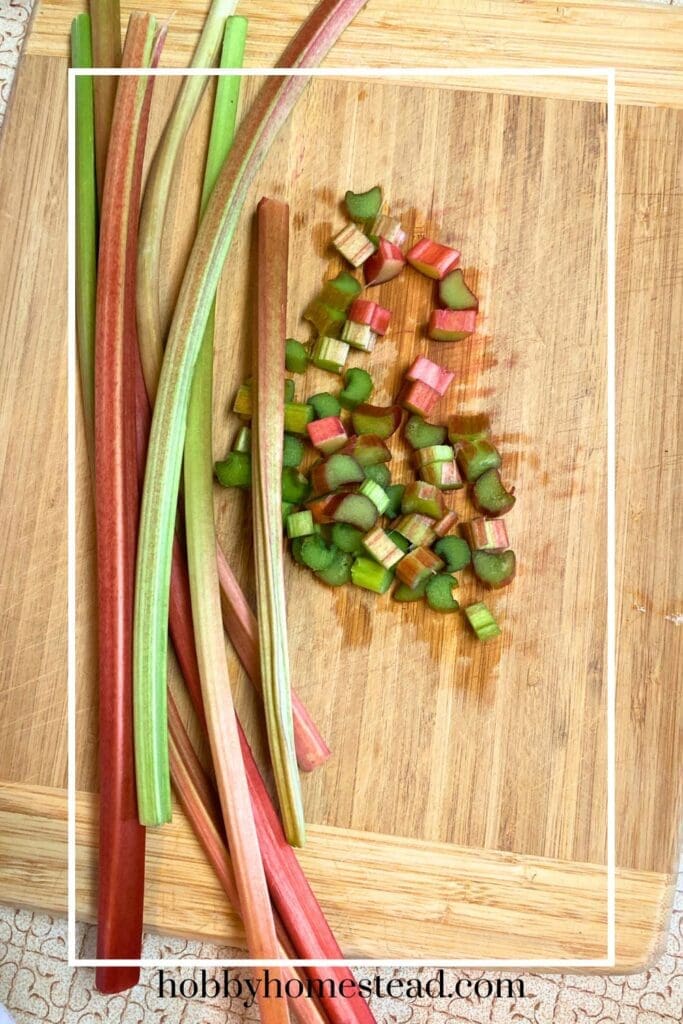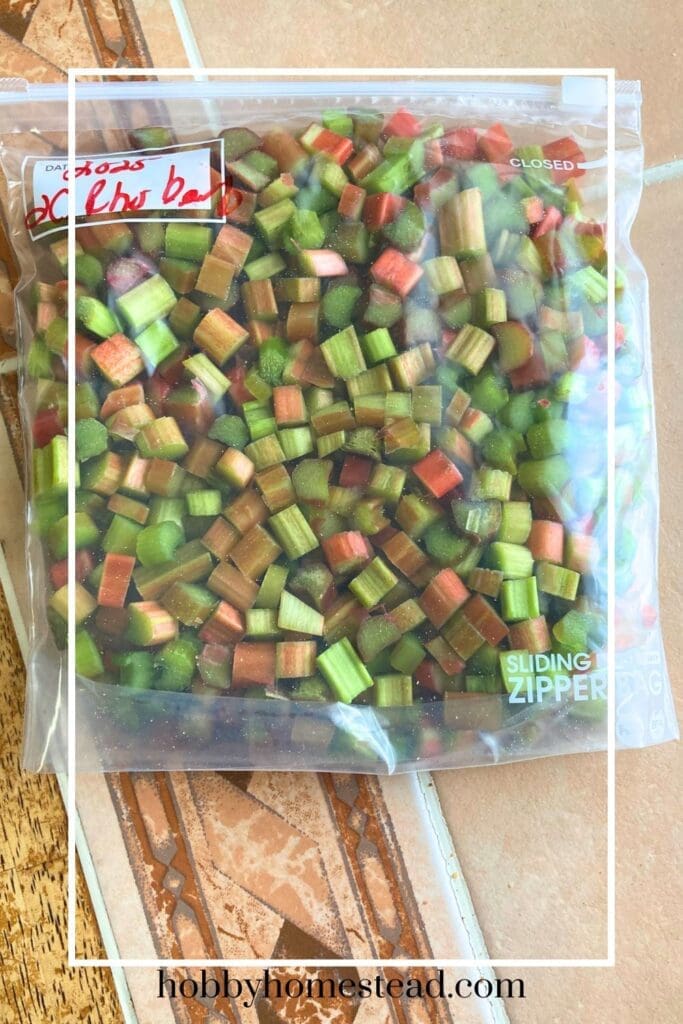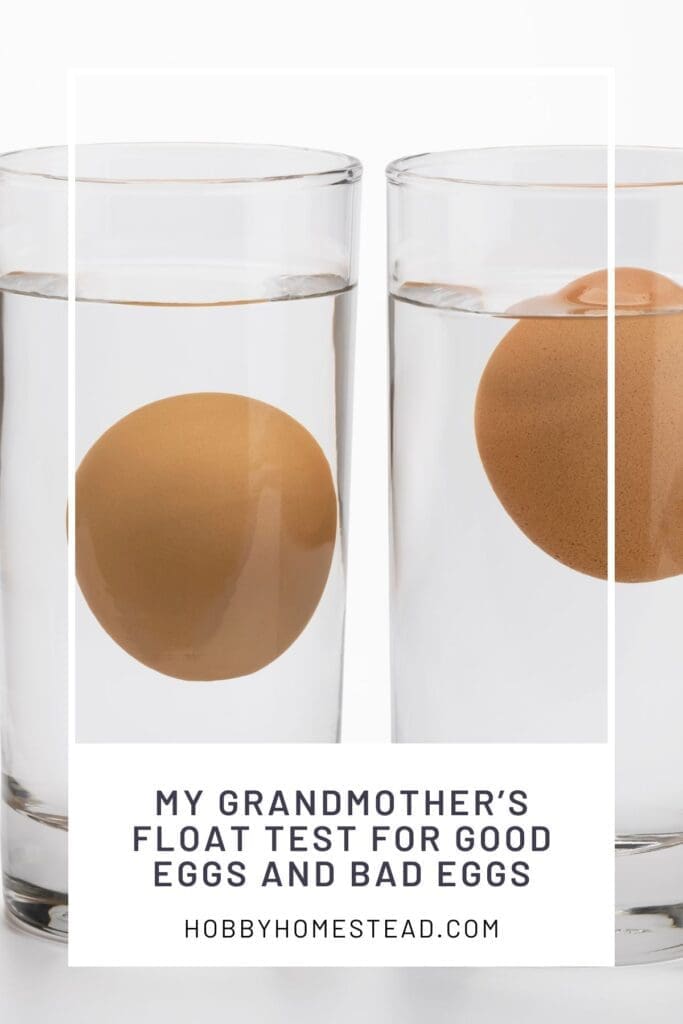Did you know you can freeze rhubarb? If you’re lucky enough to have your own rhubarb plant or pick up fresh rhubarb from the farmer’s market or grocery store during late spring or early summer, freezing it is a great way to enjoy its tart flavor all year long.
Freezing rhubarb preserves its bright color and delicious taste, making it easy to use in your favorite desserts like rhubarb pies, crisps, muffins, and even rhubarb sauce or compote whenever you want. Whether you have a large rhubarb harvest or just a little bit, these simple steps will help you freeze rhubarb the easy way with the best results.

Why Freeze Rhubarb?
Fresh rhubarb has a short shelf life and is best enjoyed soon after harvest, but freezing is a good option for preserving the rhubarb stalks for future use.
Unlike drying or canning, freezing raw rhubarb freezes the tart vegetable with minimal cooking process, helping it keep a firm texture and bright color.
We always have frozen rhubarb in our freezer. We freeze 2 cups in each container. It is so easy to add to recipes throughout the year. We always have rhubarb on hand for our favorite rhubarb recipes.
When to Harvest Rhubarb for Freezing
The best time to harvest rhubarb is in late spring or early summer when the stalks are firm and at least 10-12 inches long. It’s best not to trim tough strings and rough ends.
Always remove the rhubarb leaves! They are not safe to eat! They contain high levels of oxalic acid and are not edible.
If you bought rhubarb from the grocery store or farmer’s market, choose stalks that are crisp and brightly colored for the best quality.

Preparing Rhubarb for Freezing: Simple Steps
- Wash and Trim. Rinse rhubarb stalks under cold running water to remove dirt and grit. Trim off the rough ends and any tough strings by running a vegetable peeler or paring knife along the sides.
- Cut into Pieces. Cut rhubarb into 1-inch pieces or smaller pieces depending on your planned use. Smaller pieces freeze more quickly and are easy to portion out for recipes like rhubarb cake or rhubarb muffins.
- Optional Blanching. While blanching rhubarb is not necessary, some people like to dip rhubarb stalks briefly into a pot of boiling water for about a minute, then immediately into a bowl of ice water (ice bath) to stop the cooking process. This can help preserve color and texture but is totally optional. To be honest, I skip this step myself! But I wanted to make sure you had all the information.
- Dry Well. Remove excess moisture by patting the pieces dry with paper towels or letting them air dry for a short period to prevent ice crystals and freezer burn.
The Best Freezing Methods for Rhubarb
Flash Freeze with Tray Method:
Spread cut rhubarb pieces in a single layer on a parchment-lined cookie sheet or tray. Make sure the pieces are not touching to avoid clumping.
Place the tray in the freezer for a few hours until the rhubarb pieces are firm.
This flash freeze technique is a favorite method because it keeps the individual pieces separate, making it easy to grab just the amount you need later.
Storage Options:
Once frozen, transfer the rhubarb pieces to freezer-safe bags, plastic bags, or airtight freezer containers. Remove as much air as possible to reduce freezer burn—vacuum sealer bags work great for this.
Glass containers can also be used but leave room for expansion. Label the bags or containers with the date for easy tracking.

Storage Tips and Shelf Life for Frozen Rhubarb
To keep the best quality and shelf life, store frozen rhubarb in airtight containers or freezer bags that prevent exposure to excess air.
Using a vacuum sealer to remove as much air as possible is the best way to avoid freezer burn and ice crystals.
Frozen rhubarb stored properly in freezer-safe bags or glass containers can last from 6 to 12 months.
Keep your freezer at a consistent temperature and avoid frequent thawing and refreezing, which can degrade quality. Always label your packages with the date of freezing so you know when it’s time to use your frozen stash.
Tips to Keep Best Quality
- Use freezer bags or vacuum sealers to limit exposure to air, which causes freezer burn and affects flavor.
- Avoid excess moisture by drying rhubarb well before freezing.
- Store frozen rhubarb at a consistent freezer temperature for the best shelf life, typically 6 to 12 months.
- If you notice ice crystals on the surface, it’s a sign of excess air or moisture — still safe to use but best to avoid by proper packaging.
Tips to Avoid Freezer Burn
Sometimes frozen rhubarb can develop freezer burn, which appears as dry, discolored patches or excessive ice crystals. This happens when there’s excess air or moisture inside the packaging.
To avoid this, always use freezer bags or containers designed for freezer use, remove as much air as possible, and dry rhubarb pieces thoroughly before freezing.
If you find your rhubarb has freezer burn or tastes a little off, it’s still safe to use in cooked recipes like stewed rhubarb or rhubarb sauce where texture and appearance matter less.
Don’t freeze rhubarb in plastic wrap alone, as it doesn’t provide a good airtight seal.
Using Frozen Rhubarb: Best Ways to Thaw and Cook
You don’t always need to thaw frozen rhubarb before using it. Frozen rhubarb works wonderfully in pies, crisps, sauces, and stewed rhubarb dishes straight from the freezer.
If you want to thaw, do so in the refrigerator or at room temperature, but avoid thawing in warm water, which can make the rhubarb mushy.
Fun Fact: Rhubarb is a Tart Vegetable, Not a Fruit!
Though many think rhubarb is a fruit because it’s used in desserts, it’s actually a tart vegetable. Its bright color and tangy flavor make it a unique ingredient in both sweet and savory dishes.
Harvesting Rhubarb, the Right Way to Preserve Flavor
Freezing rhubarb is a great idea if you want to enjoy your rhubarb harvest or store fresh rhubarb from the store for later use. With these easy steps, using the tray method or simple freezer bags, you’ll preserve that tart flavor and bright color, ready for your favorite desserts and recipes all year round.
Next rhubarb season, you’ll be glad you took the time to freeze a batch!


